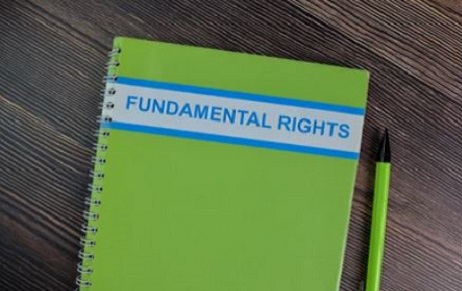Franklin D. Roosevelt (FRD) on different platforms, supported the Indian Freedom Struggle making the abovementioned…
Unboxing The Confusion In Marks Of Pharmaceutical Products
It is not new that the Supreme Court had cautiously laid down the seven principles for determining confusion or deceptiveness in pharmaceutical products. The landmark case of Cadilla held that medicines are boon but if given wrongly it can have life-threatening impact. Thus, there need not be an iota of confusion in the mind of people while buying medicines. The trademark of the pharmaceutical products must be distinctive and not similar or identical. The seven-principle test held that for deciding the question of deceptive similarity, weightage must be given to each of these factors depending upon the facts and circumstances of each case. The factors included are:
a) The nature of the marks i.e. whether the marks are word marks or label marks or composite marks, i.e. both words and label works.
b) The degree of resemblance between the marks, phonetically similar and hence similar in idea.
c) The nature of the goods in respect of which they are used as trademarks.
d) The similarity in the nature, character and performance of the goods of the rival traders.
e) The class of purchasers who are likely to buy the goods bearing the marks they require, on their education and intelligence and a degree of care they are likely to exercise in purchasing and/or using the goods.
f) The mode of purchasing the goods or placing orders for the goods; and
g) Any other surrounding circumstances which may be relevant in the extent of dissimilarity between the competing marks.
The rationale behind establishing these principles was that drugs are poisons, not sweets. Therefore, confusion between pharmaceutical products is are not merely inconvenient but also life threatening. One wrong medicine could cost a person his life. At times, drugs are purchased in critical and pressurized time where there is chaos in one’s life to save his near and dear ones. Many a times; patients are elderly, infirm or illiterate. India has varying degree of infrastructure for supervision of pharmacists and physicians of medical profession in the country due to large variation in linguistics and literacy. Same is the situation with the customers. They may not be able to differentiate between the medicine prescribed and bought which is ultimately handed over to them. There can be accidental negligence as well. The same was supported by McCarthy in Trade Marks, 3rd Edn., para 23.12 which held that the tests of confusing similarity are modified when the goods involved are pharmaceutical products. If the goods involved are pharmaceutical products each with different effects and designed for even subtly different uses, confusion among the products caused by similar marks could have disastrous effects. For these reasons, it is proper to requires lesser quantum of proof of confusing similarity for drugs and pharmaceutical preparations. The same standard has been applied to medical products such as surgical sutures and clavicle splints.
While this is one side of the coin; the other side of the coin was represented by 2015 judgement of Delhi High Court. In Sun Pharmaceutical Industries v. Anglo-French Drugs and Industries Limited, the plaintiff had registered OXETOL on one of its medicinal preparation used for curing bipolar disorder and epilepsy. On the other hand, Respondent had filed for registration of EXITOL under the same class as of the plaintiff, i.e., class 5 for its medicine used in treating constipation.
The main issue held by appellant was that the impugned trademark EXITOL of the respondent was as almost identical to the appellant’s trademark OXETOL and thus it infringed by taking advantage of the financial and human resources invested by the appellant since 2001 without incorporating any cost themselves.
Since both the products fell into class 5 i.e., medicines, therefore the Court took a pragmatic approach. It firstly held that there cannot be any U-turn from Cadilla’s judgement in terms of undermining the aspect of confusion or deceptiveness. However, in judging the deceptiveness, what also must be seen is the material differences between the product. The methods of administering the drug, the shop in which the drugs are sold, the ailment for which the drug can be prescribed are factors that are pivotal for determining deceptiveness. Elaborating on the same, the Hon’ble Court makes comparison of the dissimilarities between the two products-in-dispute in a tabular form. Aspects including different active pharmaceutical ingredients to purpose; from method of administration to visual packaging were compared.
The Division Bench of Delhi High Court upheld the order by Single Judge Bench of the same court and held that a slight semblance in the phonetic pronunciation between two marks cannot automatically satisfy the test of confusion in a person with average intelligence and imperfect recollection. It is necessary that the marks are seen as a whole. The word ‘TOL’ was common in both the marks; however, the prefix was different for both signifying two totally different medicines. Also, both the drugs were Schedule H drugs. Thus, they could only be sold on prescriptions.
Finally, the Court took a progressive view and held it may be a situation that the products-in-dispute fall into the same class and are phonetically similar. However, that cannot be the sole reason to call the marks as confusing. If there are dissimilarities which created no iota of confusion or deceptiveness, then the marks are to be held not infringing one other.
Author: Esha Himadri, Intern at Khurana & Khurana, Advocates and IP Attorneys. Can be reached at swapnil@khuranaandkhurana.com.
References:
[1] Cadila Health Care Ltd. v. Cadila Pharmaceuticals Ltd (2001) 5 SCC 73
[2] Franco Indian Research Pvt. Ltd. v. Unichem Laboratories Ltd. 2005 (30) PTC 131 (Bom)
[3] McCarthy in Trade Marks, 3rd Edn., para 23.12
[4] Sun Pharmaceutical Industries v. Anglo-French Drugs and Industries Limited(2014) 207 DLT 375
[5] Sun Pharmaceutical Industries v. Anglo-French Drugs and Industries Limited(2014) 215 DLT 493 (DB)



